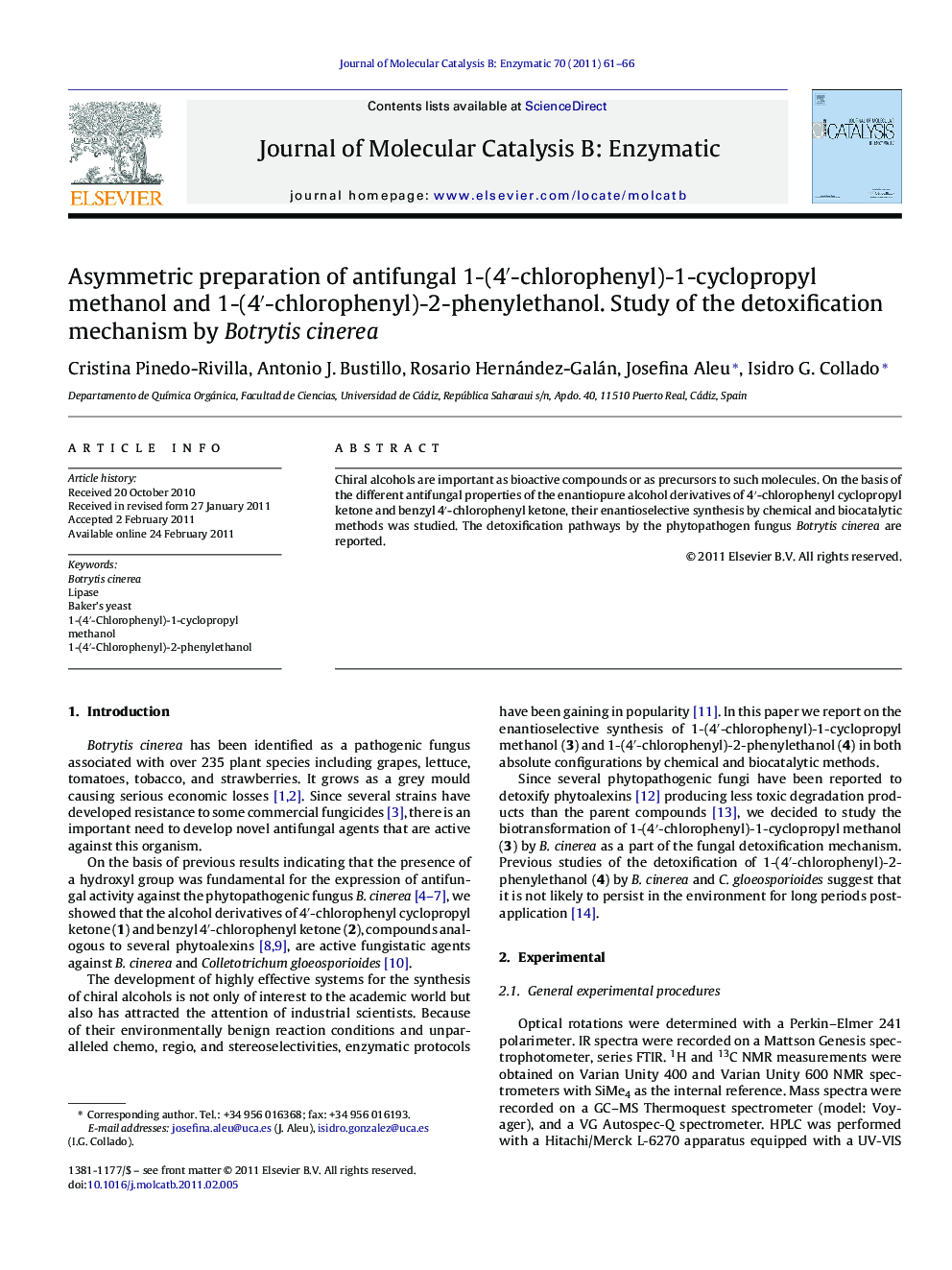| کد مقاله | کد نشریه | سال انتشار | مقاله انگلیسی | نسخه تمام متن |
|---|---|---|---|---|
| 70268 | 48819 | 2011 | 6 صفحه PDF | دانلود رایگان |

Chiral alcohols are important as bioactive compounds or as precursors to such molecules. On the basis of the different antifungal properties of the enantiopure alcohol derivatives of 4′-chlorophenyl cyclopropyl ketone and benzyl 4′-chlorophenyl ketone, their enantioselective synthesis by chemical and biocatalytic methods was studied. The detoxification pathways by the phytopathogen fungus Botrytis cinerea are reported.
Figure optionsDownload as PowerPoint slideResearch highlights
► The antifungal compound (R)-1-(4′-chlorophenyl)-2-phenylethanol was prepared by means of treatment with (R)-methyl oxazaborolidine, with >99% ee and 98% yield, and by lipase-mediated acetylation, with 99% ee.
► The antifungal compound (S)-1-(4′-chlorophenyl)-2-phenylethanol was prepared by means of treatment with (S)-methyl oxazaborolidine, with >99% ee and 98% yield, and by baker's yeast fermentation, with 97% ee.
► The antifungal compound (R)-1-(4′-chlorophenyl)-1-cyclopropylmethanol was prepared by means of lipase-mediated hydrolysis, with 98% ee and 85.5% yield.
► The antifungal compound (S)-1-(4′-chlorophenyl)-1-cyclopropylmethanol was prepared by means of baker's yeast fermentation, with 96% ee and 12% conversion.
► Biotransformation of 1-(4′-chlorophenyl)-1-cyclopropylmethanol by the phytopathogen Botrytis cinerea shows the detoxification pathways by the fungus.
Journal: Journal of Molecular Catalysis B: Enzymatic - Volume 70, Issues 1–2, June 2011, Pages 61–66